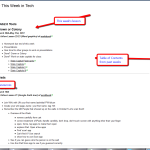September 30, 2013
19 Tips for Children’s Writers
 When you set out to be a writer, you have to not only learn how to string words, sentences, paragraphs together, but pick a genre–and then abide by the rules of that style. You can’t call yourself a fantasy writer without an unusual life form and you can’t write science fiction without a good knowledge of cutting edge inventions.
When you set out to be a writer, you have to not only learn how to string words, sentences, paragraphs together, but pick a genre–and then abide by the rules of that style. You can’t call yourself a fantasy writer without an unusual life form and you can’t write science fiction without a good knowledge of cutting edge inventions.
Same applies to children’s writers. You may think all it takes is simple words, uncomplicated plots, and pictures, but you’d be wrong. Here are some tips if your goal is to become a successful children’s writer:
- Children’s writers must enjoy children. Sound obvious? Not really. Thriller writers don’t love murder and mayhem. But to succeed with children’s books, you must be comfortable with and respectful of children.
- Know what books today’s kids buy. And understand: That changes quickly.
- Be very clear what age group of ‘children’ you are writing for, then be age-appropriate in topics, characterizations. Elementary age students read different literature than middle school.
- Decide if you’re writing for children’s leisure reading or school. If you want the backing of teachers and parents, this will be important.
- What made you laugh as a child? What made you cry? What made your heart beat faster? Write for the emotions.
- From Jo Linsdell: “Writing a children’s book may, at first, seem like an easy task but it’s not. The skill of being able to tell a captivating story in such a limited number of words, the ability to combine the written story with the visual story, creating a simple text that flows smoothly…”
- Use illustrations and sketches, even if you think you may not need them. They help you understand where you are going.
- Setting in the story should be clear, as should time.
- Story should include one strong character who solves the problem himself/herself (no parent stepping in to fix it–not in this genre).
- it’s best to stick to one POV for early readers.
- Plot has to be bigger than ‘wallflower new student finds the answer’. Avoid cliche story lines and characters. Be original.
- Teach a lesson as part of the story. This will be important to access the education market.
- Use short sentences, short paragraphs, short chapters.
- Don’t preach or talk down to them in your writing style.
- If you use long words, make sure meaning is conveyed in the writing. Children will love the challenge.
- Bad guy comes to a sticky end, and little kids are never sorry for him.
- One more bit on the ending: Make it strong. Children don’t like ambiguity.
- never talk down to readers. They are children, not stupid. Treat them with respect.
- Rachna Cchabria suggests children’s writers include animals, humor and plenty of dialogue. Click for a few more hints from this Bangalore, India writer.
What tips do you have that have helped you succeed in this genre?
More genre-specific tips:
Click to have Writer’s Tips delivered to your email box
Jacqui Murray is the author of the popular Building a Midshipman, the story of her daughter’s journey from high school to United States Naval Academy. She is webmaster for six blogs, an Amazon Vine Voice book reviewer, a columnist for Examiner.com and TeachHUB, Editorial Review Board member for Journal for Computing Teachers, Cisco guest blog, and a monthly contributor to Today’s Author. In her free time, she is editor of a K-8 technology curriculum and technology training books for how to integrate technology in education. Currently, she’s editing a thriller that should be out to publishers next summer. Contact Jacqui at her writing office or her tech lab, Ask a Tech Teacher.





